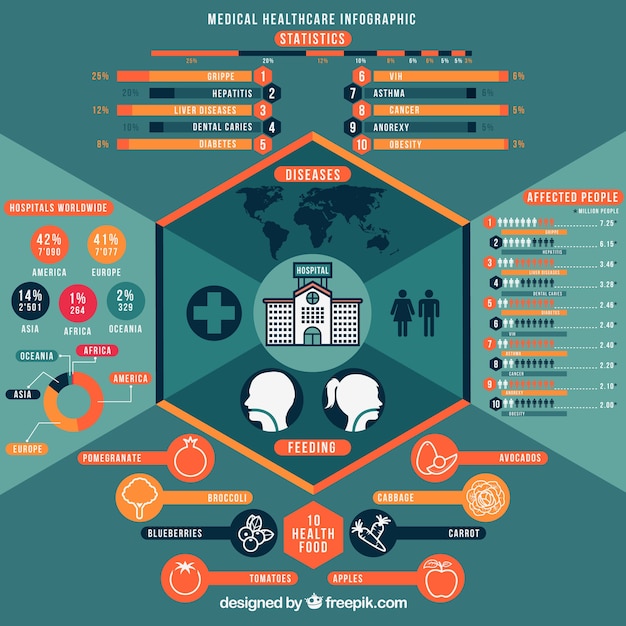Maximize Savings: How to Use a Health Reimbursement Arrangement (HRA)

A Health Reimbursement Arrangement (HRA) is an employer-funded health benefit that reimburses employees for qualified medical expenses, offering a tax-advantaged way to manage and lower healthcare costs, making it a valuable tool for both employers and employees.
Navigating healthcare costs can be challenging. A Health Reimbursement Arrangement (HRA) offers a strategic way to lower your out-of-pocket healthcare expenses by allowing employers to reimburse employees for qualified medical costs, offering a tax-advantaged benefit.
Understanding Health Reimbursement Arrangements (HRAs)
Health Reimbursement Arrangements (HRAs) are employer-funded, tax-advantaged health benefit plans that reimburse employees for qualified medical expenses. Unlike health savings accounts (HSAs), HRAs are solely funded by the employer and are not portable when an employee leaves the company.
These arrangements offer flexibility for employers to design a plan that fits their budget and workforce needs, while providing employees with a way to pay for healthcare expenses not covered by their primary health insurance plan.
Types of HRAs
There are several types of HRAs, each with its own specific rules and requirements. Understanding the different types is crucial for both employers and employees to maximize their benefits.
- Qualified HRAs: These HRAs are integrated with a group health plan and subject to certain non-discrimination rules.
- Excepted Benefit HRAs: These HRAs can be offered to employees who are not enrolled in the employer’s group health plan, but have other health coverage.
- Individual Coverage HRAs (ICHRAs): Allow employers to reimburse employees for individual health insurance premiums and other qualified medical expenses.
- Retiree HRAs: Specifically designed for retirees, allowing employers to help cover healthcare costs in retirement.

Overall, HRAs offer a cost-effective solution for both employers and employees to manage healthcare expenses. By choosing the right type of HRA and understanding the eligible expenses, individuals can significantly lower their healthcare costs while employers can attract and retain valuable employees.
Determining Your Eligibility for an HRA
Before diving into how to use an HRA, it’s essential to determine whether you are eligible. Eligibility for an HRA typically depends on your employer offering this benefit as part of their overall employee benefits package.
HRAs are employer-sponsored plans, meaning that only employees of companies that offer HRAs can participate. If your employer offers an HRA, you are generally eligible as long as you meet the basic employment requirements set by your company.
Key Eligibility Factors
While the specifics can vary, here are some common factors that determine your eligibility for an HRA:
- Employment Status: Generally, you must be a current employee of the company offering the HRA. Some HRAs may also extend to retirees or former employees under certain conditions.
- Enrollment in a Health Plan: Depending on the type of HRA, you may need to be enrolled in a specific health plan. For example, some HRAs require you to be enrolled in the employer’s group health plan.
- Specific Requirements: Your employer may have additional eligibility requirements, such as a minimum number of hours worked per week or a waiting period before you can enroll in the HRA.
Always consult your employer’s HRA plan documents to understand the precise eligibility criteria. Knowing whether you meet these requirements is the first step in leveraging the benefits of an HRA to lower your healthcare expenses.
Identifying Qualified Medical Expenses for HRA Reimbursement
Understanding which medical expenses qualify for reimbursement under your Health Reimbursement Arrangement (HRA) is essential to maximizing its benefits. Generally, qualified medical expenses are those defined by the IRS in Publication 502.
These expenses must be primarily to alleviate or prevent a physical or mental disability or illness. However, not all medical expenses are eligible, so it’s important to be familiar with the guidelines.
Common Qualified Medical Expenses
Here are some common examples of medical expenses that are often eligible for HRA reimbursement:
- Doctor and Specialist Visits: Fees paid to doctors, specialists, and other healthcare providers for diagnosis, treatment, and prevention of illness.
- Prescription Medications: The cost of prescription drugs and medications prescribed by a doctor.
- Medical Equipment: Costs for medical equipment such as wheelchairs, walkers, and blood sugar test kits.
- Mental Health Services: Expenses related to mental health treatments, including therapy and counseling.

By understanding these guidelines, you can effectively plan your healthcare spending and maximize the benefits of your HRA. Keep accurate records and receipts to ensure a smooth reimbursement process and avoid any potential issues with your HRA administrator.
Submitting Claims and Receiving Reimbursements
Once you’ve incurred eligible medical expenses and have ensured you meet the HRA’s requirements, the next step is to submit a claim for reimbursement. The claim submission process typically involves gathering necessary documentation and submitting it to your HRA administrator.
The exact procedure may vary depending on your employer’s plan, so it’s crucial to familiarize yourself with the specific steps outlined in your HRA plan documents.
Steps to Submit a Claim
- Gather Documentation: Collect all relevant documentation, including receipts, invoices, and Explanation of Benefits (EOB) statements from your insurance provider.
- Complete the Claim Form: Fill out the HRA claim form accurately and completely. Ensure all required information is provided to avoid delays in processing.
- Submit Your Claim: Submit your claim form and supporting documentation to your HRA administrator. This may be done online, via mail, or through a mobile app, depending on your plan’s options.
By following these steps carefully, you can ensure a smooth and efficient reimbursement process. Be sure to keep copies of all submitted documents for your records and track the status of your claims to stay informed about when you can expect to receive reimbursement.
Maximizing Your HRA Benefits: Tips and Strategies
To truly leverage the power of a Health Reimbursement Arrangement (HRA), consider employing some effective strategies that can help you maximize your benefits and lower your healthcare expenses even further.
These strategies involve careful planning, diligent record-keeping, and staying informed about the specifics of your HRA plan.
Strategic Tips for HRA Utilization
- Plan Your Healthcare Spending: Anticipate your healthcare needs and plan your spending accordingly. This allows you to make the most of your HRA funds while addressing your health concerns proactively.
- Keep Detailed Records: Maintain thorough records of all medical expenses, including receipts, invoices, and Explanations of Benefits (EOBs). This ensures you have the necessary documentation when submitting claims for reimbursement.
- Stay Informed About Plan Updates: Your HRA plan may undergo changes or updates, so staying informed about these changes is crucial. Review plan documents regularly and attend any informational meetings or webinars offered by your employer.
By incorporating these strategies into your approach, you can optimize the value of your HRA and achieve significant cost savings on your healthcare expenses. Remember, the key is to be proactive, organized, and informed about your plan’s details and requirements.
Common Mistakes to Avoid When Using an HRA
While Health Reimbursement Arrangements (HRAs) offer numerous benefits, it’s important to be aware of common mistakes that can hinder your ability to fully utilize these advantages. Avoiding these pitfalls can help ensure a smooth and efficient reimbursement process.
Here are some frequent errors to watch out for when using your HRA:
Pitfalls to Avoid
- Submitting Ineligible Expenses: Only qualified medical expenses are eligible for reimbursement. Review the list of qualified expenses carefully and avoid submitting claims for services or items that do not meet the criteria.
- Missing Documentation: Incomplete documentation can lead to delays or rejection of your claim. Always include all required receipts, invoices, and Explanation of Benefits (EOB) statements with your claim form.
- Exceeding Maximum Reimbursement Limits: Be aware of the maximum reimbursement limits set by your HRA plan. Avoid incurring expenses beyond this limit unless you are prepared to cover the excess out of pocket.
| Key Point | Brief Description |
|---|---|
| 💰 HRA Basics | Employer-funded plans reimbursing qualified medical expenses. |
| ✅ Eligibility | Typically depends on employer’s plan and employee status. |
| 🧾 Qualified Expenses | Defined by IRS, include doctor visits, prescriptions, and equipment. |
| 📝 Claim Submission | Gather documents, complete form, and submit to HRA administrator. |
Frequently Asked Questions (FAQ)
▼
An HRA is an employer-funded health benefit that reimburses employees for qualified medical expenses, providing a tax-advantaged way to manage healthcare costs and offering more flexibility when compared to traditional health insurance plans.
▼
Eligibility typically depends on the employer’s specific plan but generally includes employees who are enrolled in the company’s health plan or meet certain employment status requirements, though specifics vary.
▼
Qualified expenses follow IRS guidelines and often include doctor visits, prescription medications, medical equipment, and mental health services, all aimed at preventing or alleviating a medical condition.
▼
Gather receipts, invoices, and Explanation of Benefits (EOB) statements, complete the HRA claim form, and submit everything to your HRA administrator, typically online, by mail, or via a mobile app.
▼
Avoid submitting ineligible expenses, providing incomplete documentation, and exceeding maximum reimbursement limits; these can lead to delays or rejection of your claim, hindering effective utilization.
Conclusion
In conclusion, understanding and effectively utilizing a Health Reimbursement Arrangement (HRA) can significantly lower your healthcare expenses by taking advantage of employer-funded reimbursements for qualified medical costs. By following the guidelines, submitting claims correctly, and avoiding common mistakes, you can maximize the benefits of your HRA and achieve substantial savings.





